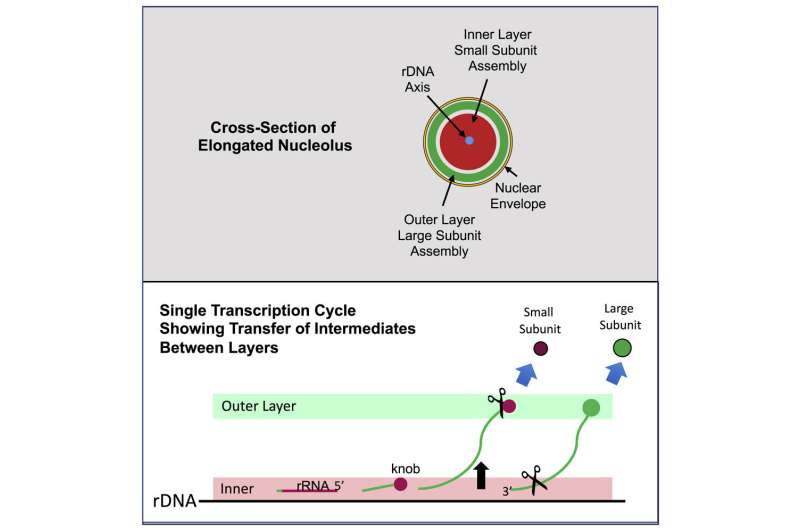Interior organization of the nucleolus discovered

The nucleolus—a conspicuous but obscure organelle within the cell nucleus—is normally too compact to be studied in detail. Researchers at Case Western Reserve University just learned how to simplify its structure in living cells and discovered how its interior is organized.
The research team, led by Alan Tartakoff, professor in the Department of Pathology in CWRU's School of Medicine, pulled out the nucleus' axial strand of DNA and observed that its DNA axis is surrounded by two layers of critical protein complexes. They learned how, when and where these complexes function in ribosome assembly.
Their study, "The nucleolus as a polarized coaxial cable in which the rDNA axis is surrounded by dynamic subunit-specific phases," was recently published in Current Biology, and answers long-standing questions about how the nucleolus assembles ribosomes (which are essential for all protein synthesis).
Although a great deal is known about the internal workings of many organelles (mitochondria, the endoplasmic reticulum, peroxisomes), the nucleolus stands out as one of the few remaining large "black boxes" of the cell.
As a result of the study, a wealth of biochemical and genetic information can be integrated into a cell biological/spatial understanding. The discovery opens up many opportunities to impede cell multiplication—as lesions of nucleolar proteins underlie many congenital diseases, some of which can lead to malignancy. Major chemotherapeutic drugs and several viruses including HIV radically perturb the nucleolus.
More information: Alan M. Tartakoff et al, The nucleolus as a polarized coaxial cable in which the rDNA axis is surrounded by dynamic subunit-specific phases, Current Biology (2021). DOI: 10.1016/j.cub.2021.03.041
Journal information: Current Biology
Provided by Case Western Reserve University




















